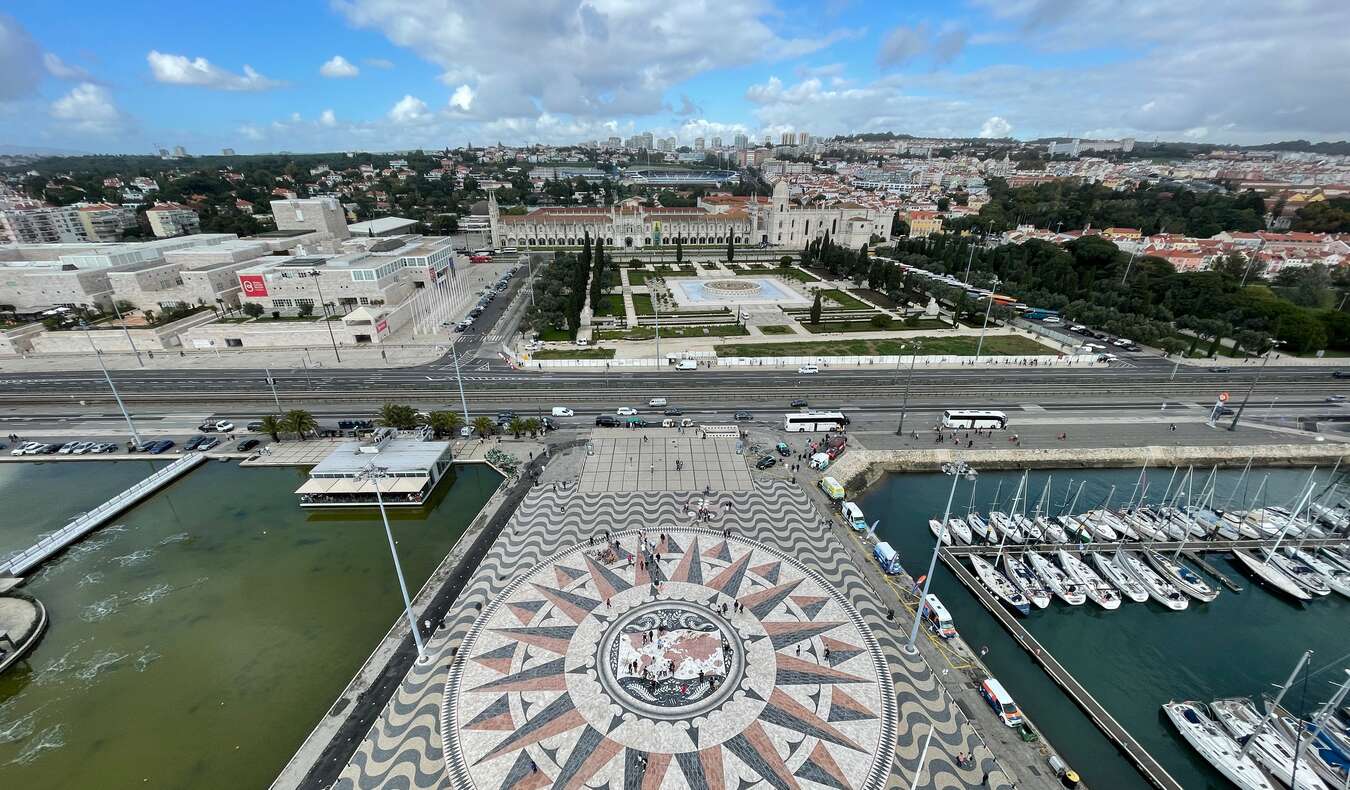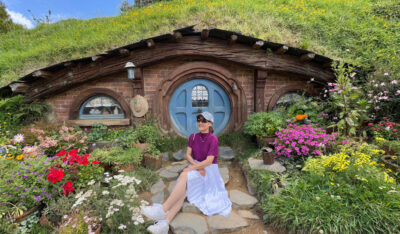Highlights of the Day
Highlights of the day in Belém included savoring the iconic Pastéis de nata at Pastéis de Belém, followed by a visit to the stunning Jerónimos Monastery. We indulged in freshly made Piña Coladas from a roadside stand. We explored the Discoveries Monument and Belém Tower. Later, we admired the grand carriages at the National Coach Museum. As the evening falls, we enjoyed a delightful seafood dinner at Cervejaria Trindade. The dinner makes a memorable mix of history, culture, and great food.
Logistics
Accommodation: Lisbon Finestay 8 Building Apartments (highly recommended)
Transportation: Public transportation or rideshare
Travel Journal
Pastéis de Belém
Belém is a historic district in Lisbon. It is famously known as the birthplace of the iconic Portuguese custard tart, the Pastéis de nata. Legend has it that in ancient times, the monks at the Jerónimos Monastery (Mosteiro dos Jerónimos) used egg whites to starch their robes. To avoid waste, the nuns used the leftover yolks to create sweet treats—thus, the beloved custard tart was born. Initially, these tarts were sold directly at the monastery. But later, production moved to the now-famous shop, Pastéis de Belém.
While researching, I learned that the takeout line at Pastéis de Belém is notoriously long, whereas the dine-in area often has fewer customers. With that in mind, I planned to sit inside and savor my tart at a leisurely pace. But when we arrived, the situation was quite the opposite. This left me no choice but to grab a box to go.
After arriving in Portugal, I sampled custard tarts several times. I’ve noticed they were quite different from what I had remembered. The versions I was used to had a flaky, soft crust. But the authentic Portuguese ones featured a hard, crunchy shell paired with a creamy, soft filling. At first, I thought the texture was due to the tarts sitting out too long in the shops. However, after tasting them at Pastéis de Belém, I realized that this crispier crust is exactly how traditional Portuguese custard tarts are meant to be—and they’re utterly delicious.
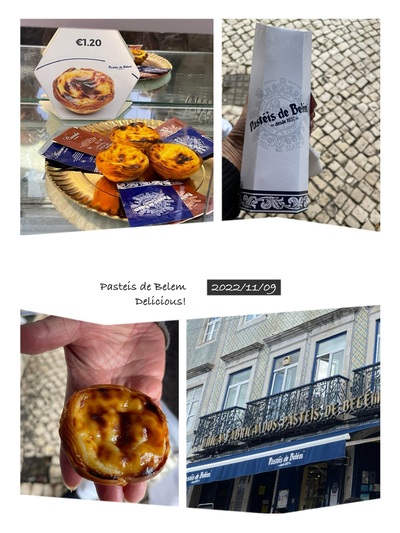
Visit Jerónimos Monastery
After savoring the delicious custard tarts, we headed to the Jerónimos Monastery. It is a UNESCO World Heritage Site and an architectural gem of the Manueline style. When we arrived, we saw the longest line of our entire trip. As I waited, my attention was drawn to the intricately carved doorway beside me. The stonework was remarkably detailed yet incredibly lifelike, showcasing the extraordinary craftsmanship of the stonemasons who created it.
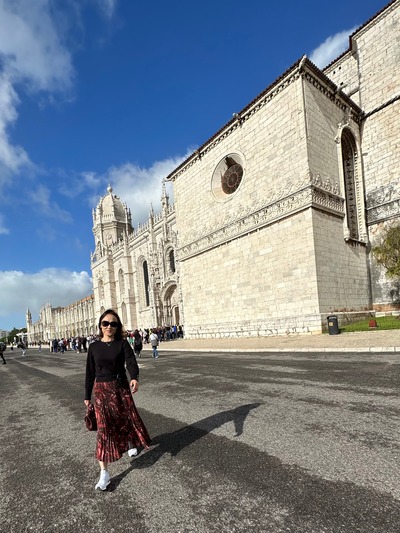
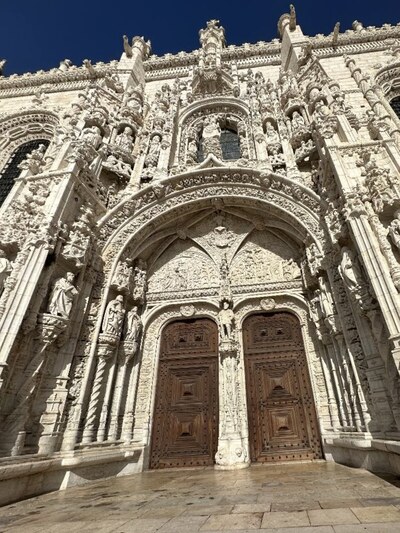
Stepping inside the monastery, the sheer grandeur of the space immediately struck us. The vastness of the building, coupled with its soaring ceilings, was awe-inspiring. The intricately carved columns added to the sense of wonder, each one a masterpiece in its own right.
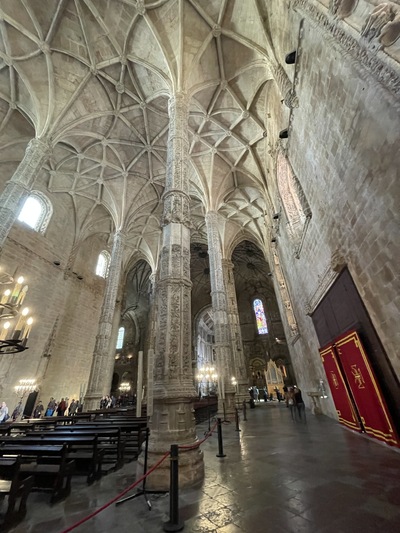
Inside, we found several tombs, including that of Vasco da Gama, whose legendary voyage to India ushered in a new era of exploration. The monastery was built in the early 16th century. It was a monumental tribute to his achievements and Portugal’s maritime glory during the Age of Discoveries.
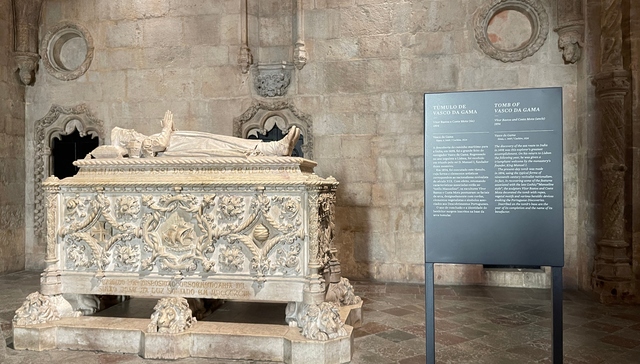
Piña Coladas on the Street
On our way to our next attraction, we stumbled upon a charming roadside stand offering freshly made Piña Coladas. The drink was poured back into a hollowed-out pineapple, allowing you to sip directly from the fruit. There was something uniquely fun and refreshing about enjoying this tropical treat right on the street, straight from the pineapple, rather than at a bar. I couldn’t resist and had to indulge in this playful and delicious experience.
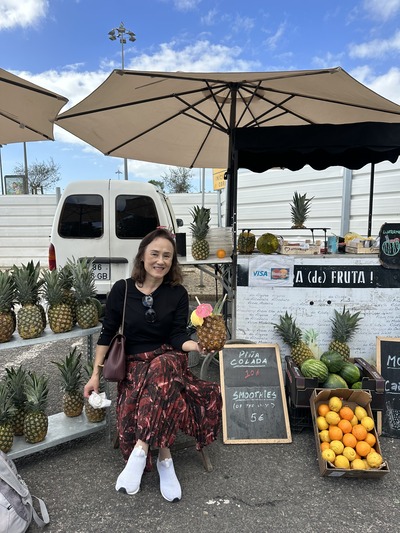
Discoveries Monument
We then continued our journey to the Discoveries Monument (Padrão dos Descobrimentos). It is a striking tribute to Prince Henry the Navigator, a trailblazer of the Age of Exploration. Originally constructed for the 1940 World Expo, the monument was later rebuilt in concrete in 1960, taking on the iconic form we see today.
Prince Henry’s contributions during the Age of Discovery were transformative. He laid the foundation for Portugal’s maritime dominance. He established a navigation school, training explorers, and fostering advancements in seafaring techniques. His vision and efforts propelled Portugal to the forefront of exploration, making it the leading maritime nation of its time.
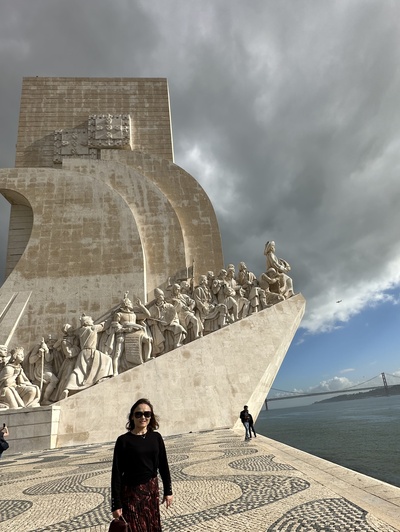
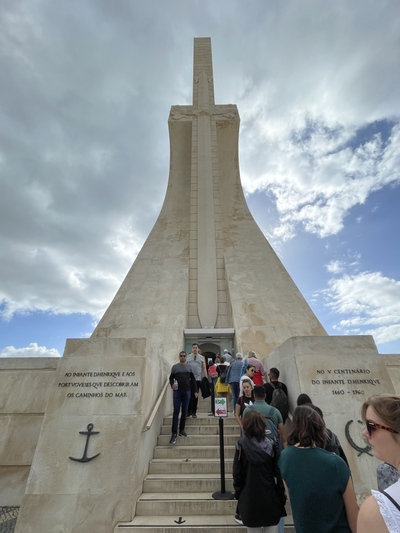
We ascended to the top of the Discoveries Monument. There, we saw breathtaking, panoramic views of the city and the bustling harbor below. The sweeping vistas showcased Lisbon’s charm and its deep connection to the water. This offered a moment to truly appreciate the city’s maritime legacy.
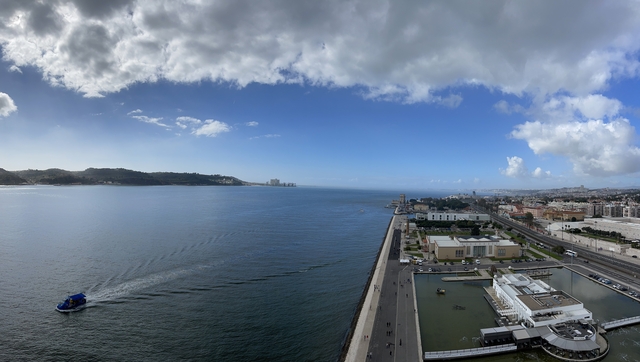
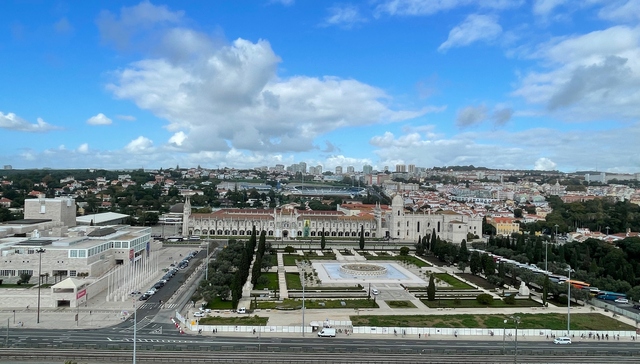
Belém Tower
Our next stop was the iconic Belém Tower (Torre de Belém), a UNESCO World Heritage Site and symbol of Portugal’s maritime heritage. As we approached, I noticed the tower’s unique location—standing gracefully on the water rather than on solid land. To reach the tower, visitors must cross a floating bridge, adding an air of adventure to the experience.
Built in the early 16th century, the tower served as a defensive fort to guard the Tagus River and Lisbon’s harbor, as well as a ceremonial gateway for explorers setting sail. It is another masterpiece of Manueline architecture, featuring intricate carvings, nautical motifs, and small turrets.
Once a garrison, powder magazine, and prison, today the tower stands as a striking reminder of Portugal’s Age of Discovery and spirit of adventure.
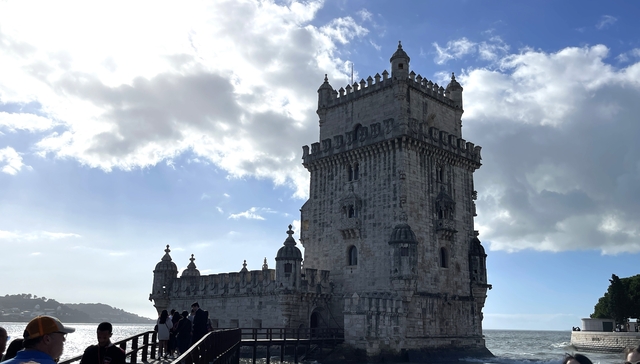
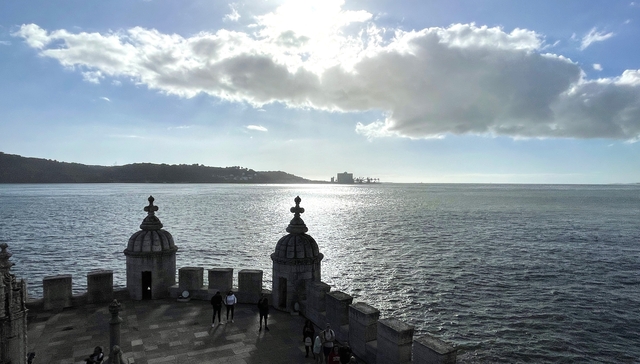


National Coach Museum
With some time to spare, we decided to visit the National Coach Museum (Museu Nacional dos Coches), a fascinating glimpse into Portugal’s royal history. Housed in a beautiful, purpose-built building, the museum displays an impressive collection of intricately designed carriages that once belonged to Portuguese royalty and nobility. The collection spans several centuries, showcasing a wide variety of ornate coaches, from the grand royal carriages used for state ceremonies to more intimate vehicles designed for personal travel.
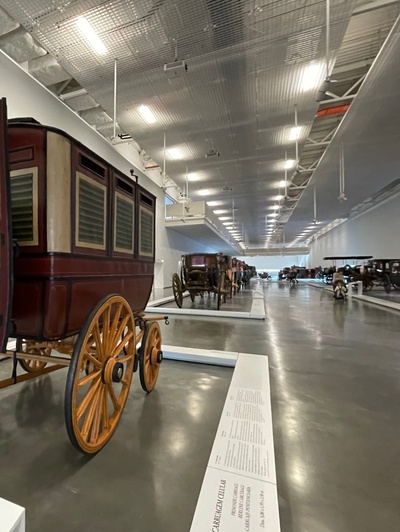
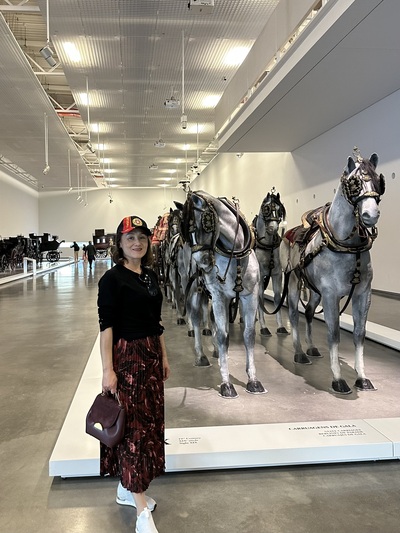
Dinner at Cervejaria Trindade
On our way back from the Belém district, our friendly Uber driver struck up a conversation, and it quickly became clear that he loved his job. With a smile, he recommended a seafood restaurant, Cervejaria Trindade, for dinner, and we decided to take his advice.
The restaurant itself was a work of art, with its stunning architecture and vibrant ambiance. Located in a former monastery, the interior boasts high ceilings, beautiful tile work, and a rich history that adds to the dining experience. The food was exceptional. In Portugal, we made a habit of choosing seafood, and it never disappointed, and Cervejaria Trindade was no exception. The crabs and shrimp were incredibly fresh, perfectly prepared, and bursting with flavor.
The service was equally impressive, with attentive staff who made us feel welcome and ensured our experience was seamless. It was the perfect way to end the day—surrounded by delicious food, excellent service, and a charming setting.
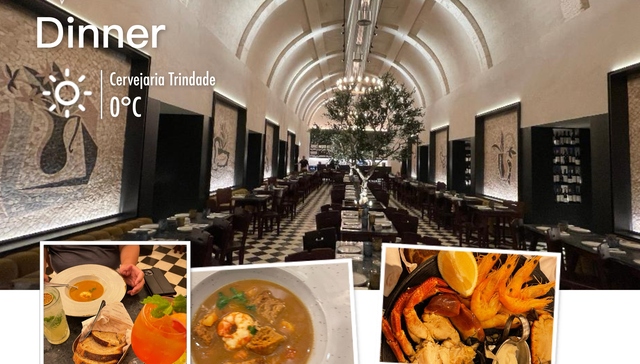
If you’d like to learn more about the itinerary, please click the button below to download a free copy of the customizable itinerary.

